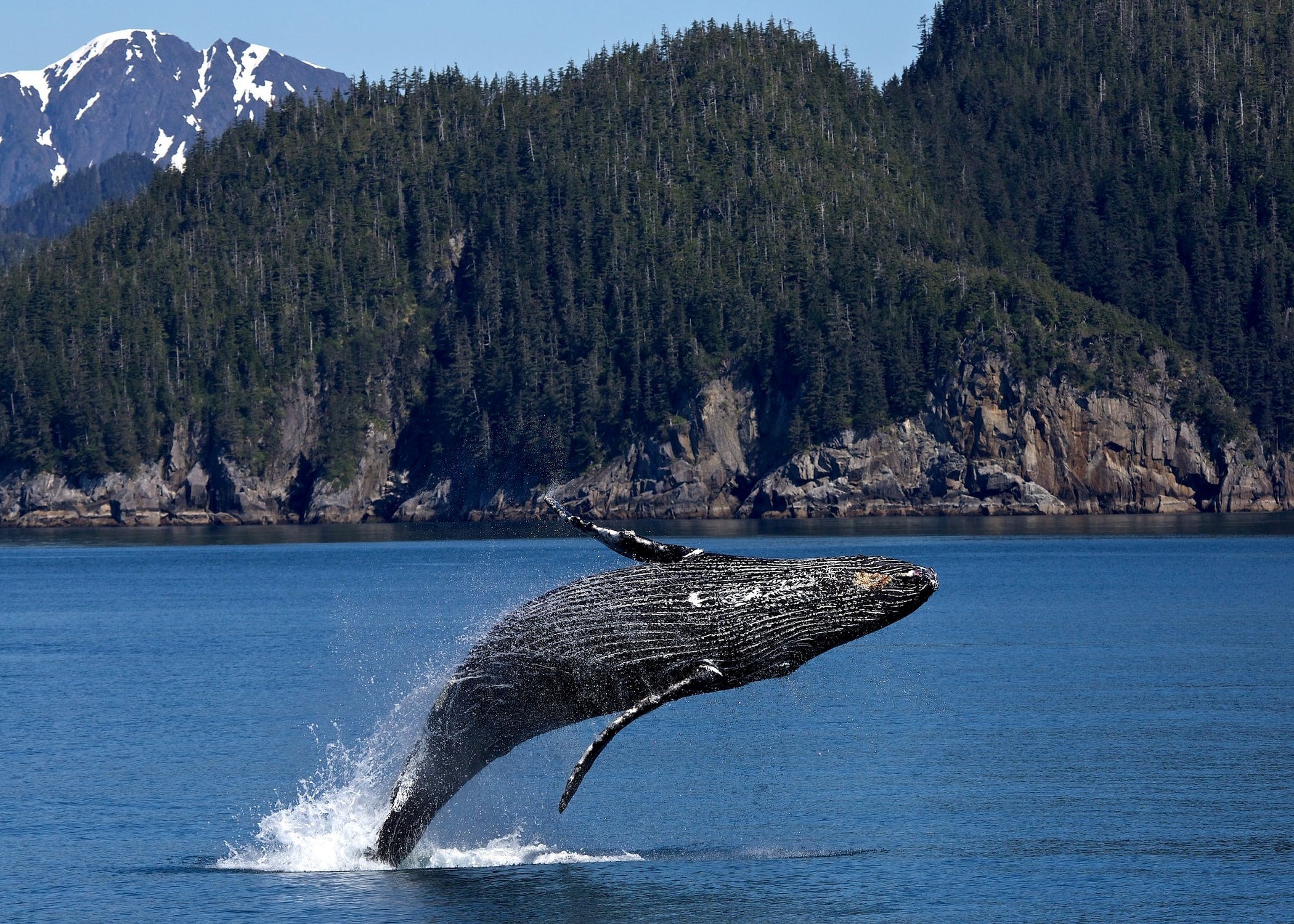Animals are incredible in so many ways. Their omnipotent instincts, dazzling colorations, and astounding survival abilities are just a few ways that animals never cease to amaze us. Another impressive characteristic is how they travel across vast skies, deserts, and seas to feed and reproduce. Animal migrations are one of the many great wonders of the world, and new information is being discovered all the time about how animals move through this world.
Many of the most iconic and well-known migrations are undertaken by marine animals. Depending on who you ask, the record for longest known migration of any mammal is held by either humpback whales, which migrate between the equator and the North or South Pole, or gray whales, which migrate between the Baja California peninsula and the Arctic. Each of these whales migrates over 10,000 miles roundtrip. In 2015, one western gray whale is thought to have achieved the record by swimming from Russia to Mexico and back – a journey of nearly 14,000 miles (LiveScience.com).
Birds are also known for traveling unbelievably long distances. The Arctic tern is a small bird that is fairly indiscernible from other seabirds, except that it migrates the longest distance of any animal in the world, flying at least 25,000 miles during their annual migration from the Arctic to the Antarctic (The National Wildlife Federation). Terrestrial animals also undertake impressive migrations, usually in response to seasons and in place of hibernation. Caribou, deer, zebras, wildebeests, and elephants are known to migrate great distances in search of food and water.
Scientists utilize several different techniques to track these animals. Satellite telemetry is when an animal is fixed with a transmitter that sends a signal to an orbiting satellite. The satellite transmits the data to a receiving station on earth, which can be accessed through a computer. Satellite tags can record not only the animal’s location, but also information about the animal’s surroundings, such as temperature. It can also lead to important scientific discoveries. NOAA Fisheries scientist Jeffrey Polovina led a study which revealed that loggerhead sea turtles swim along an ocean front that separates nutrient-rich waters to the north from nutrient-poor waters to the south while swimming back and forth between Japan and Mexico (NOAA Fisheries). This is valuable information for ensuring that endangered loggerhead sea turtles are protected throughout their range.
Radio and acoustic telemetry are two other animal tracking methods used by scientists. Both work by emitting a high frequency signal that is picked up by a receiver placed nearby. Radio tags can be used to track birds, terrestrial animals, and aquatic animals. Acoustic (or “ultrasonic”) telemetry is more commonly used to track animals that dive to deeper water depths, like sharks.
The ability to track and study the movements of animals is an essential aspect of conserving them. Scientists need to know where animals go, at what time of year, and what drives their movements in order to ensure their protection. Wildlife monitoring can bring poachers to justice, reveal how climate change is altering migration routes, and help establish new protected areas for threatened and endangered animals. In the case of critically endangered black rhinos, tracking can help protect them from the grim threat of the horn trade. For marine mammals, tracking can reveal clashes between migration routes and shipping lanes. Effective wildlife management utilizes tracking data to construct better laws and minimize negative interactions between wildlife and humans.
Scientists have learned a great deal about how to protect animals through tracking, and this area of study will continue to expand as new technologies are developed. But you don’t need to be a scientist to participate in wildlife monitoring. Citizen science empowers the general population to observe wildlife and submit data during their day to day activities. This creates a tapestry of animal location information and puts a global solution right into our own hands. The combined efforts of scientists using cutting-edge technology to track animals, and global citizens contributing their own information, is making the field of animal tracking more complete overall, and paving the way for more comprehensive animal monitoring and management.




